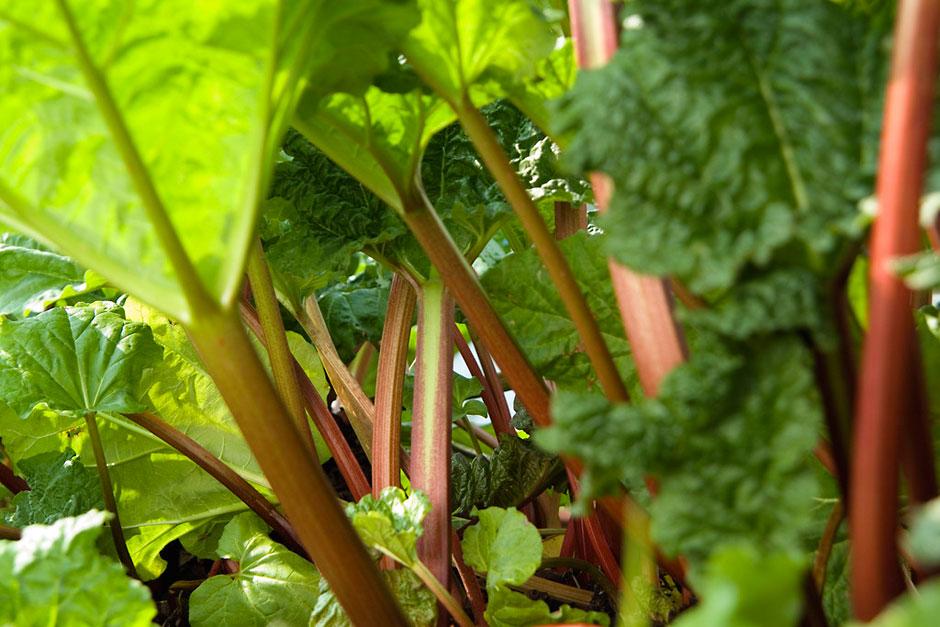Rhubarb
November is the perfect time to plant a rhubarb crown

- Season
- Autumn
- Name
Rheum x hybridum
- Common Name
- Rhubarb
- Description
Rhubarb is a perennial plant whose stems can be used for cooking – particularly for rhubarb crumble.
- Interesting Facts
- The leaves of rhubarb are toxic
- In the 1500’s rhubarb was more expensive to buy than the spice cinnamon
Growing Tips
Where to grow:
Choose a sunny open site in which to plant your rhubarb crown as rhubarb does not grow well in shade. Make sure the site is weed-free and dig lots of organic matter in to the soil. Most soils are suitable for growing rhubarb apart from soils that are frequently waterlogged, as they can cause the crown to rot.
What you do:
Dig a hole and plant the crown with the growing point level with or just below the soil surface and firm in. If you are planting more than one rhubarb crown, space the plants 1m (3 ¼ft) apart, with 90cm–2m (3–7ft) between rows.
Maintenance
Water the plants during the summer if the weather is dry and cut back the old leaves in the autumn after they have died back naturally.
Harvesting
Don’t harvest the stems in the first season after planting. Harvest lightly in the second season and after then, the stems can be picked from April to July or August. When harvesting, pull the stems rather than cutting them, this will help to prevent the rotting of the stump
Try forcing rhubarb for an earlier crop of tender pink stems. To do this, cover the rhubarb crown in December or January with a layer of straw and an upturned bucket to block out the light. The stems will be ready to pull two to three weeks later.

